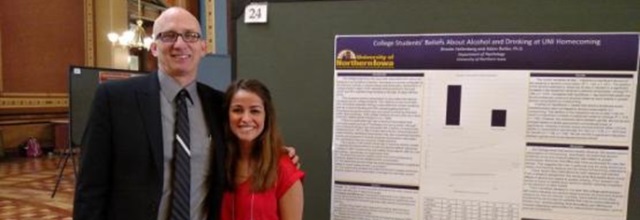Honors Program Theses
Award/Availability
Open Access Honors Program Thesis
First Advisor
John Ophus
Keywords
Computer-assisted instruction--Iowa; Educational technology--Iowa;
Abstract
According to information from AEA 267 and the Annual Report on the Condition of Education 2016 by Iowa’s Department of Education (IDOE), 198 school districts out of 336 in Iowa (about 58%) have implemented a form of 1:1 programs, giving their students access to a tablet or laptop computer. This trend in education falls in line with the increased technology expenditures observed by the state in the past 10 years (Figure 1). These expenditures also relate to increased spending per pupil, which further supports that this increase is due primarily to the adoption of 1:1 and not, for example, a rapid increase in students (Figure 2).
This large investment in technology, $73.9 million dollars in the last year alone (IDOE, 2016), has the possibility of not being fully utilized. If technology is being used predominantly as a replacement for conventional methods, a digital form of analogue practices, then school districts are not fully implementing the technology to its fullest potential. The broader purpose of schools adoption of 1:1 is to allow educators to do things they could not before. So, using technology in innovative, new ways would be a school districts best use of the technology or how these educators can get the most out of their investment.
An evaluation of how technology is being implemented in classrooms would benefit school districts that have already made the adoption of 1:1 programs, showing possible gaps in professional development and implementation strategies if used predominantly for conventional means. An evaluation would also benefit school districts looking to make an investment in 1:1 programs, because it could show possible avenues towards innovative uses of technology that do not require 1:1 adoption. Such an approach could save school districts from the high costs associated with a 1:1 investment, but still help them achieve innovative uses of the technology that has been already purchased by the district. So rather than making the high investment in a 1:1 program, this evaluation could show how school districts who might already have technology in the classroom, such as projectors, can still reach innovative uses with that technology. This would predominantly help school districts will less money, who cannot afford a 1:1 program, but still want to have good technology implementation.
While the Iowa Department of Education does not provide any evaluation of technology implementation for school districts, this thesis aims to provide one. To do this, college students were asked about their perceptions of innovativeness of their high school teachers’ use of technology in the classroom. An online survey of college students taking Inquiry into Life Sciences, Earth and Space Science, and Physical Science at the University of Northern Iowa was given to record these perceptions, during the Spring Semester 2017.
Year of Submission
2017
Department
Science Education Program
University Honors Designation
A thesis submitted in partial fulfillment of the requirements for the designation University Honors
Date Original
2017
Object Description
1 PDF file (34 pages)
Copyright
©2017 - Preston Vorthmann
Language
EN
File Format
application/pdf
Recommended Citation
Vorthmann, Preston, "Student perceptions on the innovative use of technology in Iowa classrooms" (2017). Honors Program Theses. 273.
https://scholarworks.uni.edu/hpt/273



